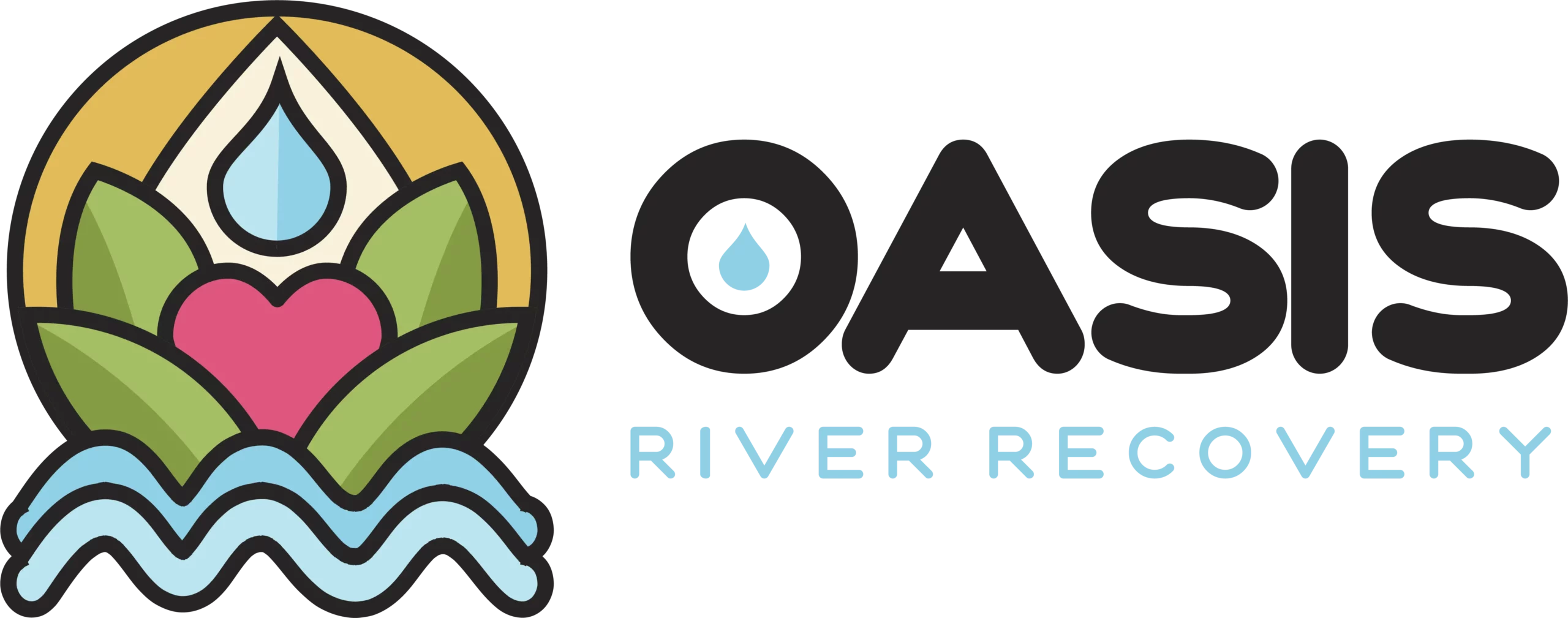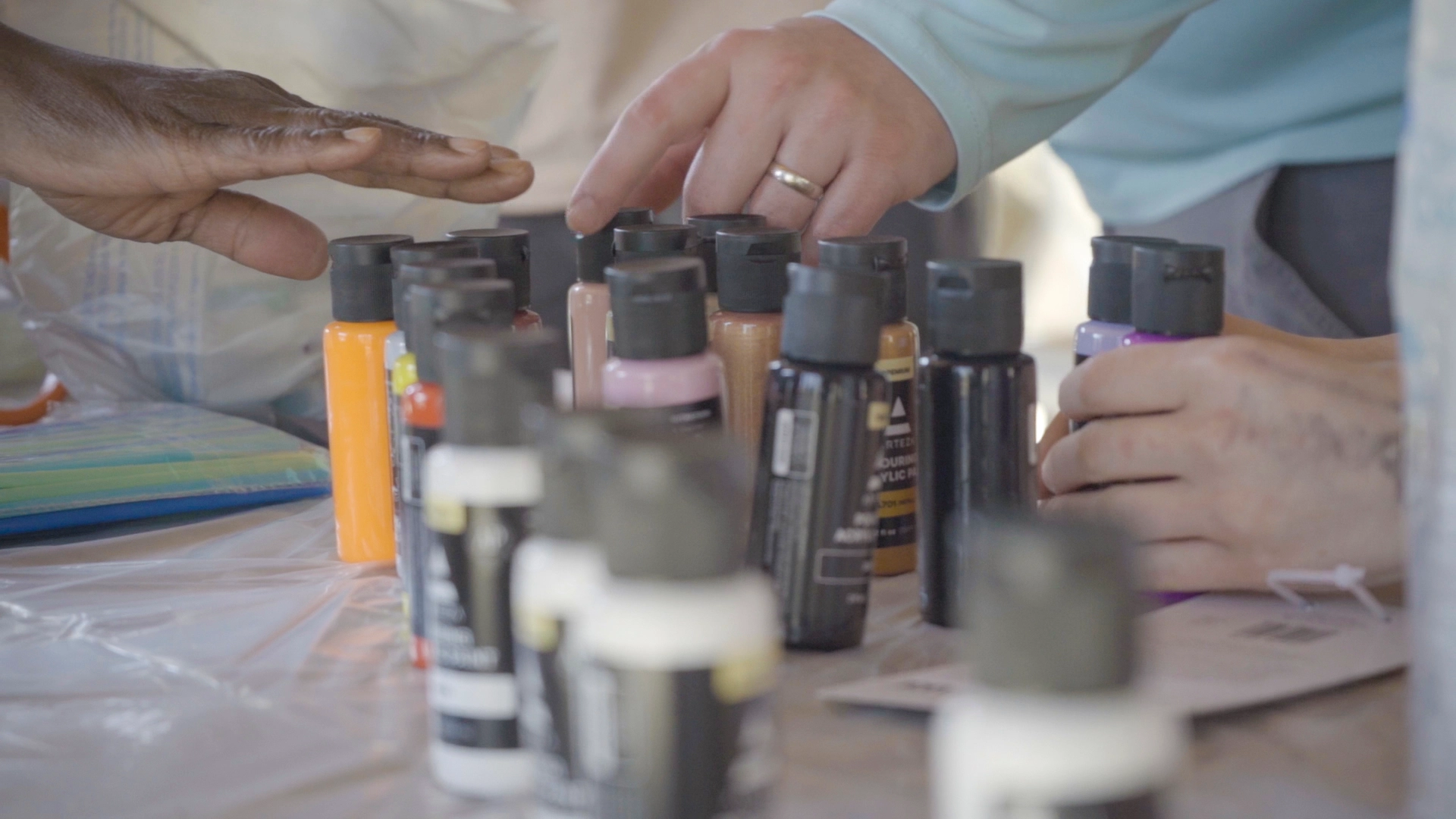Group art therapy can be highly beneficial for individuals who find traditional therapy sessions unenjoyable or unhelpful in expressing their feelings. Even in regular group therapy sessions, individuals can have a hard time feeling motivated to share their own stories or experiences, even when surrounded by empathetic peers. This brief article explains how group art therapy works, the types of activities usually found in art therapy programs, and how it specifically benefits those struggling with addiction or mental health disorders.
What Is Group Art Therapy?
Group art therapy is designed to give individuals a space for emotional release and self-expression using visual art, music, sculpting, crafting, or other mediums in a group setting. This differs from traditional one-on-one therapy sessions between solo clients and therapists. In most cases, group art therapy sessions are focused on themes, prompts, or specific hardships, such as substance abuse, gender issues, anger, or grief. Even though the needs of each individual are accounted for, group art therapy is usually less formal, and the group dynamic can shape talking points and direction.
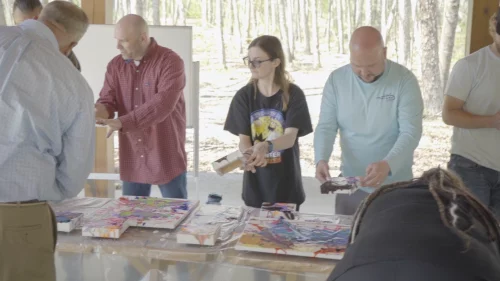
Typical Group Art Therapy Activities
Typical group art therapy activities usually focus on mindfulness, creative expression, and finding an artful path to a meaningful life and recovery. Some of these activities include:
- Drawing exercises: Clients can draw in the dark as they see or hear a story by the group leader. Another exercise includes drawing with your non-dominant hand, which forces your brain to work differently and bring out new feelings and thoughts.
- Mandalas: Participants can work together on a group mandala and contribute their artistic skills and feelings to individual sections.
- Color wheels: Individuals can use a feelings wheel to add colors, shapes, or objects that describe how they experience positive and negative emotions.
- Self-portraits: Individuals can choose their medium and format to create self-portraits, incorporating their feelings and emotions. Participants can also create and design masks that reflect how they see themselves, a process conceptualized by Carl Jung.
- Story writing: Participants can write stories about their experiences using metaphors or analogies, allowing them to translate their emotions into words they feel more comfortable with.
- Other group activities include gratitude trees, sculpting, authentic movement and breathing exercises, soap carving, individual and group collages, and listening, drawing, or painting to music.
Types of Group Art Therapy
There isn’t a standard group art therapy process, and themes and styles are usually based on the needs of the individuals. Some types of art therapy groups include:
- Open studio: Each participant works on their project at their own pace. The group leader or art therapist will then discuss the projects individually, and group discussion may not occur until after the projects are completed.
- Group analysis: Group analysis sessions usually include the same type of art projects in an open studio but involve more discussions and activities between group members.
Note: The American Art Therapy Association recommends group art therapy sessions to be facilitated and led by a professional and licensed art therapist.
Read more: Building Healthy Relationships During Addiction Recovery
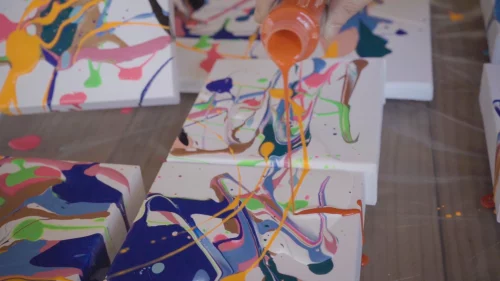
Benefits of Group Art Therapy
Group art therapy can benefit any individual needing dedicated mental and emotional support with a mental health disorder, neurodevelopmental disorder, addiction, or physical disability.
- Reduces stress: Studies have shown that combining art therapy with group sessions decreases cortisol levels, a stress hormone that can build up in individuals. Participants can also feel more relaxed in these casual and creative environments than in typical therapist’s offices with couches and chairs.
- Improves mood: Engaging in creative projects and group collaboration can be fun and exciting. Participants usually feel excited before the group session and use the experience as a highlight of their week once it’s over.
- Improve self-esteem: Various studies indicate that group art therapy can boost self-esteem and coincidence. While it helps if all group members participate, talking to just one person who understands what an individual is going through can validate their challenges and make them feel heard. Other studies highlight how this is especially helpful for women and individuals struggling with self-image.
- Increased emotional expression: No one is born with the ability to articulate and express their feelings perfectly. And not everyone learns how in traditional therapy sessions. Group art therapy provides a safe and new outlet for expressing emotions that may have been repressed or misunderstood. Watching how others use art materials to express themselves can also be beneficial, allowing participants to listen and share strategies and feedback.
- Increased sense of community: Group art therapy brings the group members together using cooperation, communication, and shared experiences. This safe space helps clients know they are surrounded by peers as eager as them to grow and recover.
While group art therapy has many advantages, it’s necessary to highlight some potential downsides. Group art therapy sessions require more resources and attention, and some participants can have negative experiences if they’re neglected. Problematic group members or stressful dynamics can also make some group sessions challenging. If you’re unsure of what type of therapy suits you best, contact a professional treatment center and ask for a consultation.
Read more: Drug Rehabs In Tennessee: Integrating Nature With Treatment
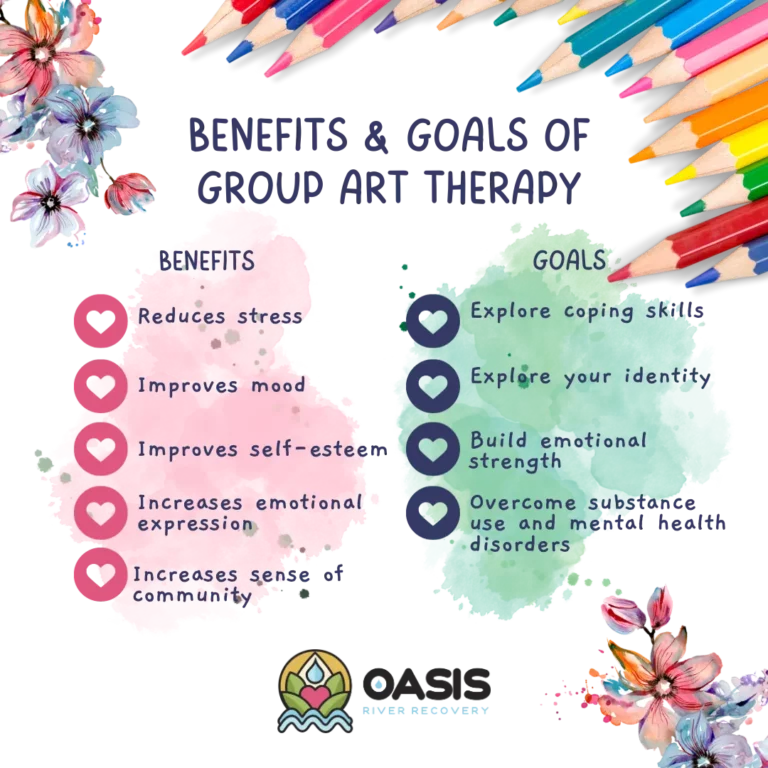
Who Does Group Art Therapy Help The Most?
Group art therapy is perfect for individuals who want to:
- Explore coping skills and styles: Group art therapy helps participants learn and improve problem-solving skills, coping skills, and healthy ways to manage obstacles.
- Explore their identities: Group art therapy can help them learn how to express themselves and the difference between their inner and outer selves.
- Build emotional strength: Individuals struggling with mental health and substance use disorders can feel disempowered. Group art therapy can teach them how to express themselves and give them the strength to accept and acknowledge their feelings. This also helps individuals create their own emotional support systems and set long-term goals and hope for the future.
- Overcome addiction and substance abuse: Detoxing and avoiding substances isn’t enough to beat addiction and substance use disorders. Group art therapy helps those in addiction treatment understand their addiction, why it happened, what drives them toward recovery, and what challenges they’ll need to face. This can help individuals find positive outlooks, introspect, and verbalize and express their emotions and feelings toward substance use.
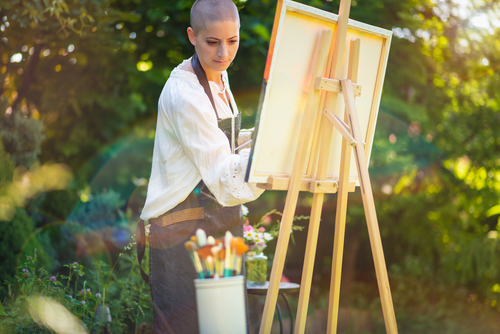
Contact Oasis River Recovery
If you or someone you know could benefit from group art therapy, contact Oasis River Recovery. Our addiction treatment center combines evidence-based therapy methods with holistic and experiential healing modalities, including art therapy, adventure therapy, and yoga therapy. We also make use of our center’s location and include kayaking, rafting, wall climbing, and ziplining in all of our addiction treatment programs. Call today, and one of our admissions agents can help you or a loved one find true recovery through holistic and comprehensive treatment.

